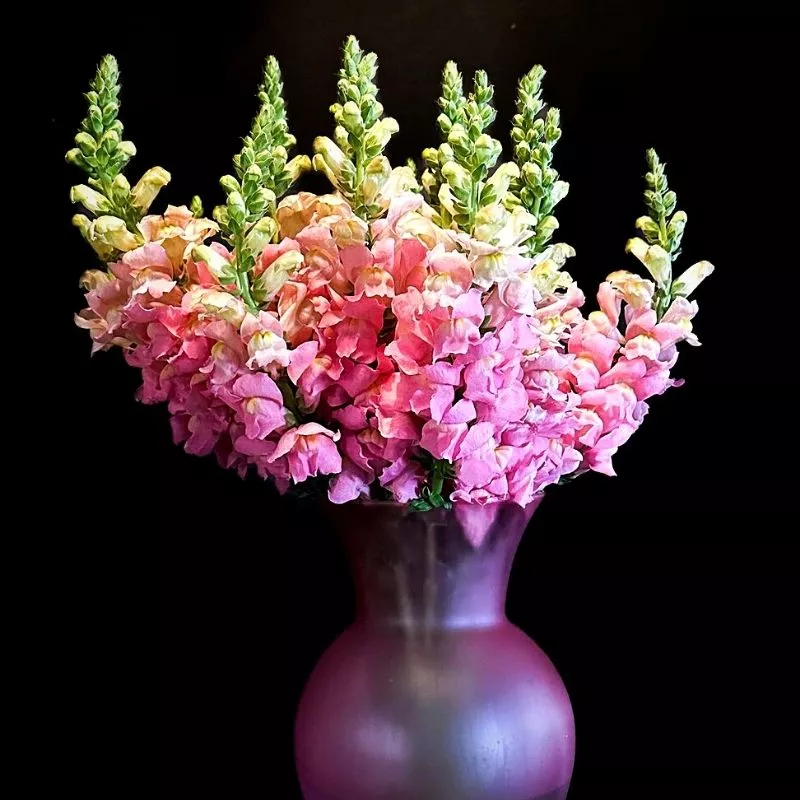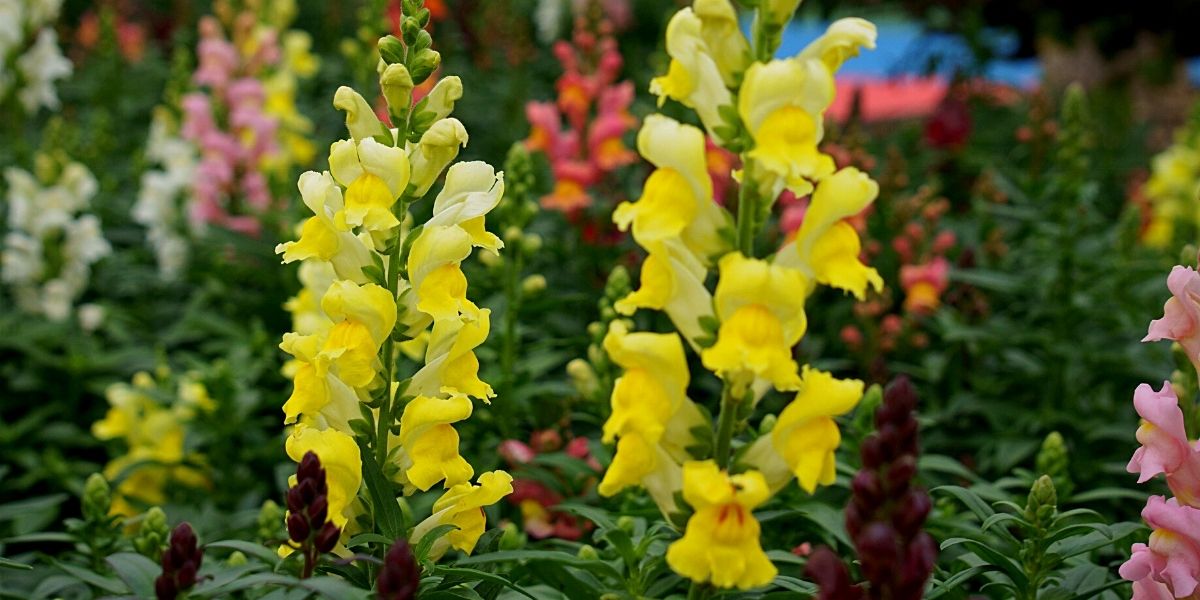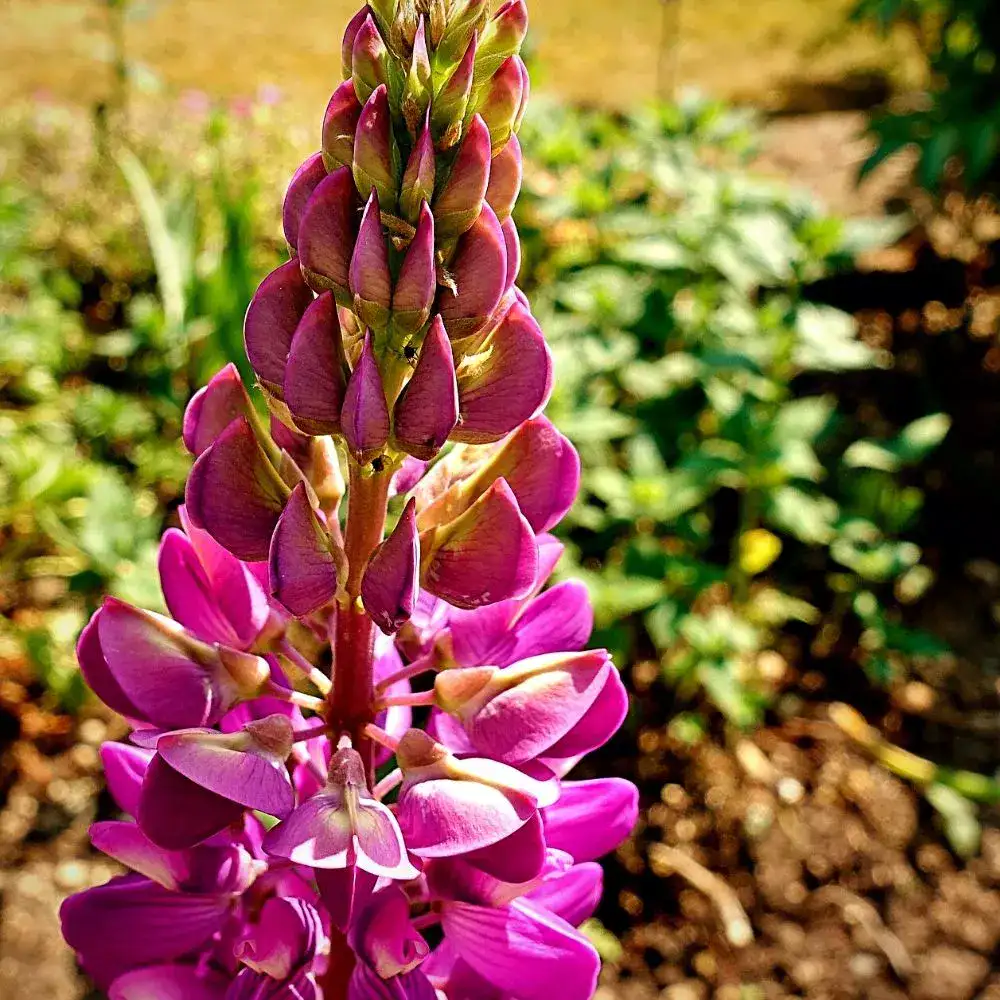
Snapdragon
Flower Other Flowers
Discover the beauty of snapdragons, a beloved flower known for its vibrant colors and unique shape.

The snapdragon flower is a delightful and vibrant addition to any flower lover's collection. Its bright and cheerful colors bring joy and positivity to any space. Whether you are a seasoned gardener or just starting your floral journey, the snapdragon plant is sure to captivate your heart.
The snapdragon flower, also known as Antirrhinum, is a versatile and enchanting plant that originates from the Mediterranean region. Its name, Antirrhinum, is derived from the Greek words "anti," meaning like, and "rhin," meaning nose, due to the flower's unique shape resembling a snout or dragon's mouth.
The snapdragon plant has been cultivated for centuries due to its striking appearance and long-lasting blooms. It has become a popular choice for flower arrangements and designs due to its tall and majestic spikes adorned with colorful blossoms. With over 40 different species, snapdragons offer a wide range of hues, including vibrant reds, soft pinks, sunny yellows, and delicate pastels.
Snapdragons are adored for their versatility, making them suitable for both interior decor and thriving in tropical climates as outdoor plants. Their ability to flourish in various settings has made them highly sought after worldwide.
Indoors, a vase filled with snapdragons brings a burst of color and fragrance to any room. Their unique vertical growth habit adds a touch of elegance and drama. Snapdragons also make excellent cut flowers, lasting up to two weeks in a vase with proper care. Their enchanting fragrance fills the air, creating a soothing and uplifting atmosphere.
In tropical climates, snapdragons thrive under the warmth of the sun. Their hardy nature allows them to withstand higher temperatures, making them a popular choice for outdoor landscapes. Whether planted in gardens, borders, or containers, snapdragons add a playful and lively element to any outdoor space.

Sunlight
Snapdragons thrive in full sun to partial shade. They require at least 6 hours of direct sunlight each day to ensure healthy growth and abundant blooms. Place them in a location where they can bask in the sunlight without being exposed to scorching heat during the hottest part of the day.
Water
It is important to keep the soil consistently moist but not waterlogged. Water your snapdragons thoroughly when the top inch of the soil feels dry. Be mindful of heavy rainfall, as excess water can lead to root rot. Avoid overhead watering to prevent the formation of fungal diseases, instead, water at the base of the plant.
Humidity
While snapdragons appreciate moderate humidity, they can tolerate a wide range of humidity levels. Indoor environments usually provide sufficient humidity levels for their growth. However, in dry climates, misting the leaves with water can help increase humidity around the plant.
Temperature
As a resilient plant, snapdragons can endure various temperature ranges. They prefer temperatures between 60°F (15°C) and 70°F (21°C) during the day and cooler temperatures between 50°F (10°C) and 55°F (13°C) at night. Protect them from extreme cold or heat, as it can stress the plants and inhibit their growth.
Soil
Snapdragons thrive in well-draining soil that is rich in organic matter. A loamy or sandy soil with good drainage ensures that the roots have proper aeration and prevents waterlogging. Adding compost or organic mulch to the soil enhances its fertility and helps retain moisture.
Propagation
Snapdragons can be propagated from seeds or cuttings. Growing them from seeds is a popular choice as it allows you to explore different varieties. Sow the seeds indoors in early spring or directly in the garden after the danger of frost has passed. Keep the soil moist until the seedlings emerge and transplant them to their desired location.
Common Problems and Pests
Snapdragons are generally free from major pest and disease issues. However, they can occasionally be susceptible to aphids, snails, and slugs. Regularly inspect your plants for any signs of pests and promptly treat them to prevent infestations. Providing adequate air circulation and maintaining proper plant hygiene can help prevent fungal diseases.
Header image by CayYJ, profile image by LuisBruna, featured image by @wessie60
Subscribe to the
newsletter, and get
bedazzled with awesome
flower & plant updates